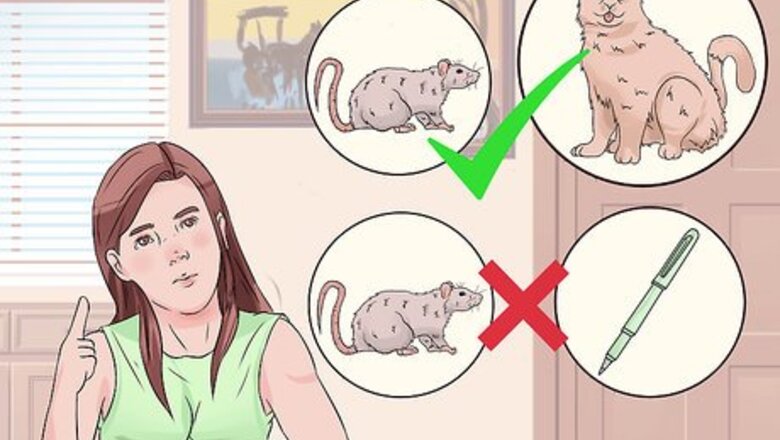
views
Choosing the Right Words
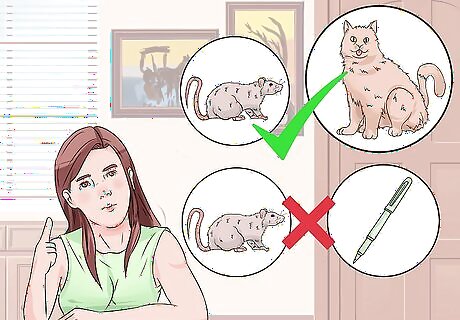
Choose simple words that rhyme well. Kids love to read rhymes. They're a fun way for kids to feel as if they're interacting with the text and also help to develop phonemic awareness. When deciding what words to use in your book, pick ones that will lend themselves easily to rhymes such as cat, hat, mat, rat, sat, pat.
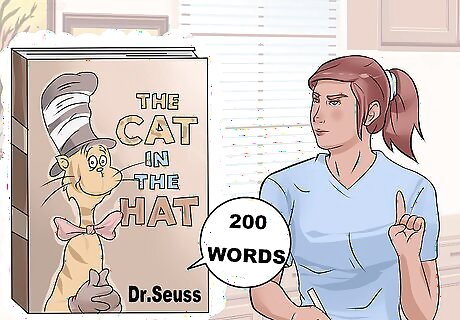
Give yourself a word limit. Dr. Seuss' The Cat in the Hat uses a total of just 236 words. Using constraints like word limits can boost your creativity and force you to choose your language carefully. Try giving yourself a word limit of around 200-400 words and challenge yourself to pick simple words that lend themselves easily to repetition and rhyme.
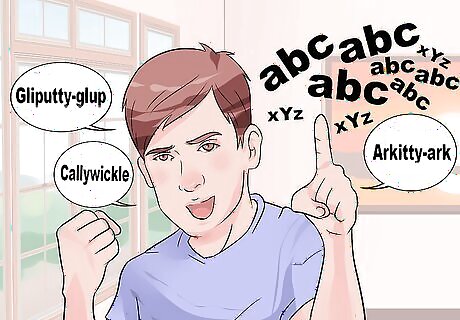
Don't be afraid to make up words. Part of what makes reading Dr. Seuss so entertaining is his use of made up words such as glipputy-glup, schloppity-schlopp, sneetches, and wumbus. Made up words are great for kids because they let them see that language can be fun, silly, and creative. Plus, made up words can often be funnier than real words, which helps kids stay engaged with the text. For a fun exercise, try making up a word starting with every letter of the alphabet. Arkity-ark, blooble, callywickle – don't worry about them sounding good, just let loose and write! Made up words also help children develop awareness of the sounds of different letters. Nonsensical words challenge kids to figure out the phonetics of the word with no prior knowledge of the word's use in common speech.
Using Language Creatively
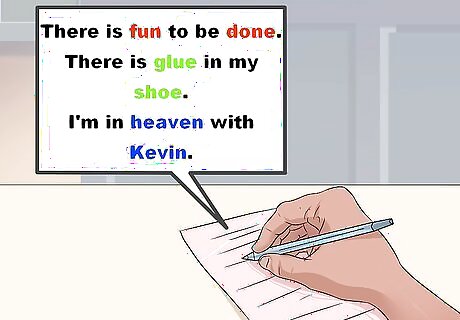
Use internal and end rhyme. Once you've chosen a good number of words that rhyme, experiment with writing sentences that use rhyme in creative, weird, and varied ways. Two common forms of rhyme are internal rhyme, which uses rhyming words within the same sentence, and end rhyme, which rhymes words at the end of two sentences. Internal rhyme uses words that rhyme within the same sentence, such as “There is fun to be done” from The Lorax. Try writing 10-20 sentences with internal rhyme: “There is glue in my shoe” or “I'm in Heaven with Kevin,” for example. End rhyme uses rhyming words at the end of sentences, such as “Would you? Could you? In a car?” Eat them! Eat them! Here they are,” from Green Eggs and Ham. A great way to practice end rhyme is to write a few poems using potential characters from your story. Try using an ABCB rhyme structure, where the two B lines rhyme. For example: “It's in my hair / it's on my nose / but luckily / I have a hose.”
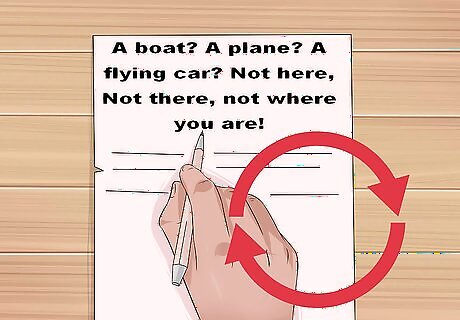
Be repetitive. Repetition gives your writing energy. Children especially love repetitive language, because it makes lines catchy and easy to memorize. Part of what makes the line “I do not like green eggs and ham, I do not like them Sam I am” is the repetition of “I do not like.” Play around with similar repetitive structures in your writing so that kids will want to repeat your lines again and again and again. Don't be afraid to use questions! Questions lend themselves well to repetition and rhyme. For example, “A boat? A plane? A flying car? Not here, not there, not where you are!”
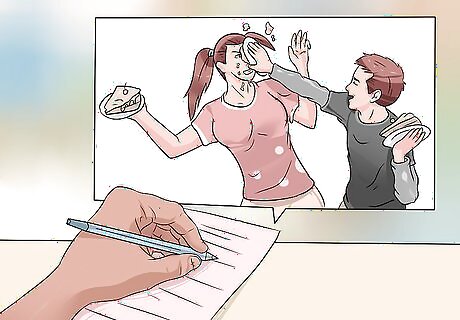
Don't sound patronizing. Kids will immediately recognize language that reads as too adult or filled with obvious morals. Give in to the silliness of the world you are creating. Focus on using rhyme, repetition, and nonsense words in a way that is fun for you and the reader. This will make the moral of your story seem more natural and intrinsic to your story, instead of blatant and overstated.
Building a Seuss-Like World
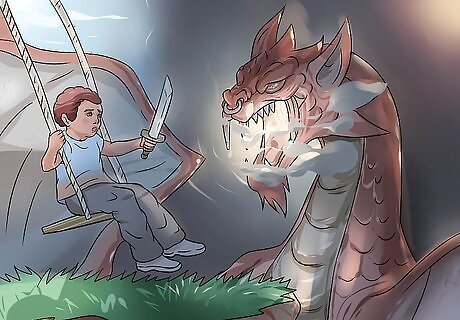
Mix reality with fantasy. Part of what makes Dr. Seuss so fun is his ability to create weird and unrealistic situations out of everyday life. The Cat and the Hat begins with two normal children playing inside on a rainy day, and escalates into a life-sized, bow-tie wearing cat pulling two mythical creatures out of a box. Kids love to see relatable, real life situations devolve into complete chaos and fantasy. Try starting your story in a normal location – a house, school, bank, park – and letting your imagination run wild from there.
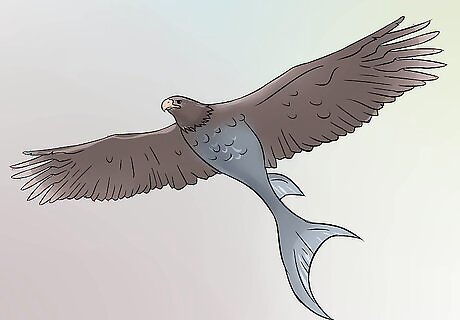
Create vivid characters. When most people think of Dr. Seuss, they can remember some of his most vivid characters by name: the Grinch, the Lorax, Thing One and Thing Two. These characters are so memorable because of their imaginative and wacky appearances and personalities, and also their funny names. Create characters that are brimming with life, fantasy, silliness, and completely unique traits. Write a list of a few potential character names and some of their physical as a writing exercise. For example, the Flaren might have green wings and wear a rainbow baseball cap.
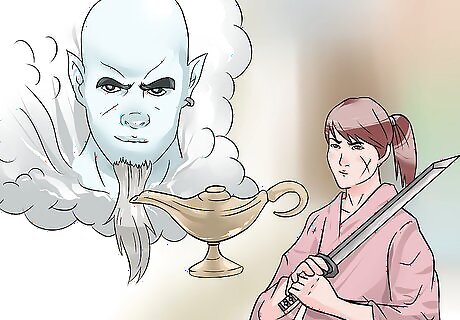
Draw from myth, folklore, pop culture, and travel. Myth and folklore are great resources for learning more about fantasy, compelling characters, and timeless storytelling. Brushing up on some of these classics can help spark your own imagination. If you are able to draw inspiration from pop culture, kids will instantly find your story relatable. Travel is another great way to broaden your horizons and expose yourself to new situations and people that you can use later in your writing.




















Comments
0 comment